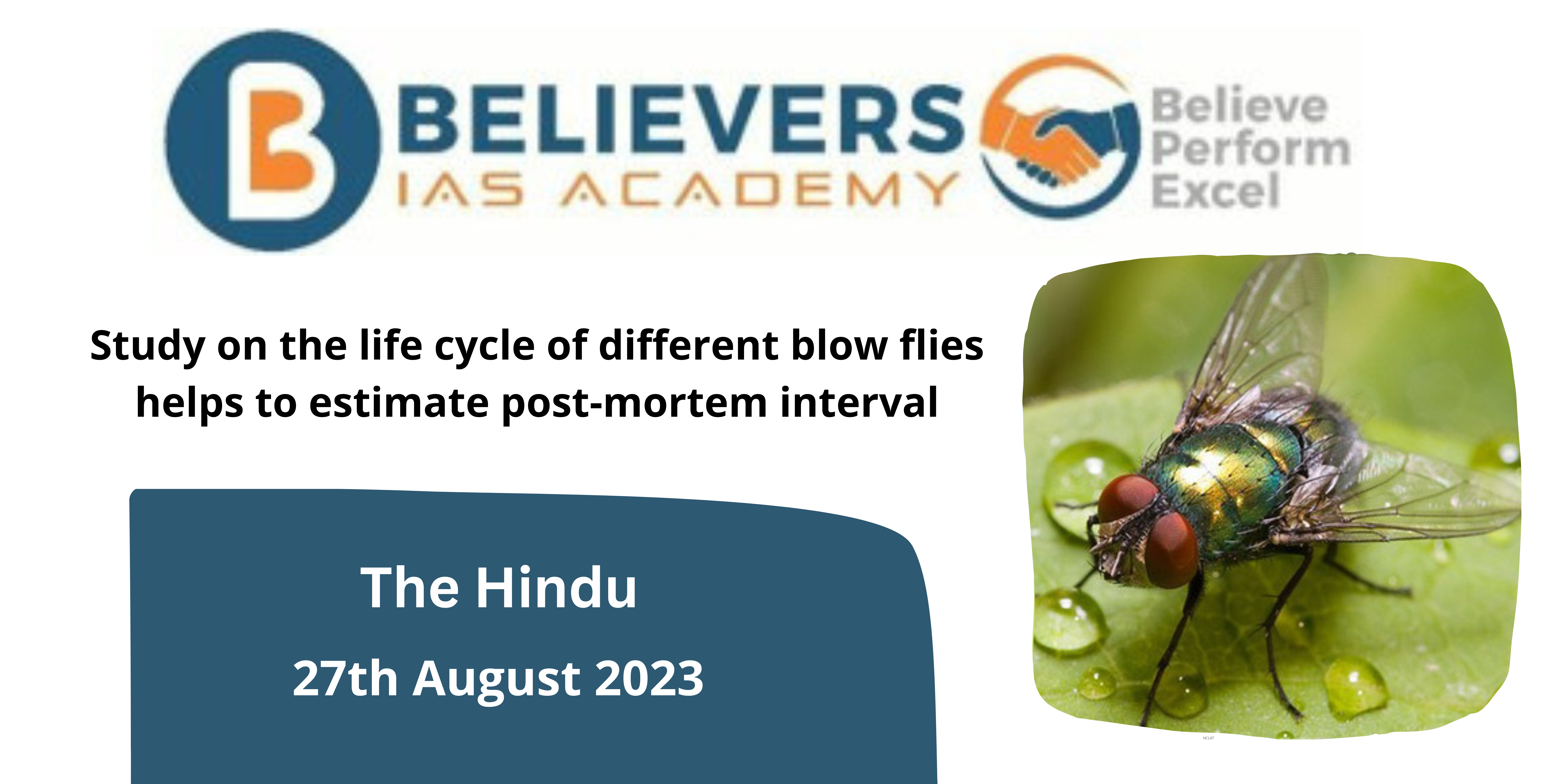Study on the life cycle of different blow flies helps to estimate post-mortem interval
Context
The first insects to dwell and colonize a dead body are flies from the family Calliphoridae of the order Diptera. These insects, often referred to as blow flies, are crucial for determining the post-mortem interval (PMI), or the amount of time that has passed since a person’s death.
Introduction to Blow Flies and PMI Estimation:
- The first insects to settle on a dead body are blow flies, which are members of the Diptera order’s Calliphoridae family.
- They are also referred to as blow flies, and they are essential for determining the post-mortem interval (PMI), or the period since death.
- Forensic science investigations use PMI estimates to recreate the sequence of events in criminal instances.
Seasonal Variation in Blowfly Development:
- The development of blowflies varies seasonally, according to studies, and this is related to a variety of factors including temperature, humidity, rainfall, and genetic diversity.
- The rate of egg laying, larval development, and pupation in blow flies can be affected by changes in various environmental conditions.
Research Details:
- By Reject, conducted At Calicut University and the Kerala Police Academy, Paul M.P., an assistant professor, teaches in the MSc Forensic Science Program.
- Central Kerala’s blow fly species are the main subject.
- Eight genera and four subfamilies were used to classify 17 species of blow flies.
- researched four species in particular: Hemipyrellia ligurriens, Chrysomya rufifacies, Chrysomya chani, and Chrysomya megacephala.
Identification of a species:
- Identification using both morphological (physical traits) and molecular (genetic) criteria.
- To reliably distinguish between species, molecular approaches probably utilized DNA sequencing or other genetic analysis.
Impact of Temperature and Humidity on the Life Cycle of the Blow Fly:
- This study looked into how temperature and humidity affect the life cycle of blow flies.
- For all four of the examined species, it was discovered that the pre-oviposition period—the interval preceding egg laying—was much longer in the winter.
- This implies that blowfly reproduction may be slowed down by cooler winter temperatures.
Larval Instars and the Monsoon Season:
- It was observed that during the monsoon season, the length and weight of larval instars—different developmental stages of larvae—were much higher.
- Chrysomya megacephala and Chrysomya rufifacies in particular, have been observed.
- suggests that the unique monsoon circumstances would be preferable for these species to thrive.
Regression Equation Method for PMI Estimation:
- created a regression equation technique that proved to be the most effective way to estimate PMI using blow fly life history data.
- This technique probably required developing a mathematical model that links the blow fly’s developmental stages to particular environmental factors.
- provides forensic investigators with a quantitative technique to more precisely determine the time of death using blow fly data.
Significance of the study
- The study’s importance is that it sheds light on the complex interactions between blow fly behaviour, environmental variables, and forensic applications.
- illustrates how forensic science’s real-world challenges can be solved with the use of scientific study.
- gives forensic specialists insightful information to help them estimate PMI more accurately.
Conclusion:
In conclusion, this work clarifies the connections between blow fly behaviour, development, and environmental factors and shows how this information may be used for precise PMI calculation in forensic investigations.




